#Backtesting
Explore tagged Tumblr posts
Text
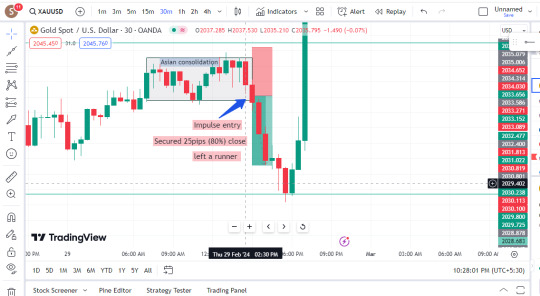
Gold! Remember to backtest and journal your trades. Simplify your charts for clearer opportunities. Keep it straightforward, folks! Clean charts enhance opportunity visibility.
2 notes
·
View notes
Text
4/9-Weekly EMA Crossover Strategy
I recently came across a reddit post from some random guy in Brazil. He mentioned the 4/9 EMA cross was pretty successfull so I wanted to try it.
Period = Weekly Initial Size = $1000 Stop Loss = -$50 Opening Condition = 4 period EMA > 9 period EMA Closing Conditions = Close < 20EMA


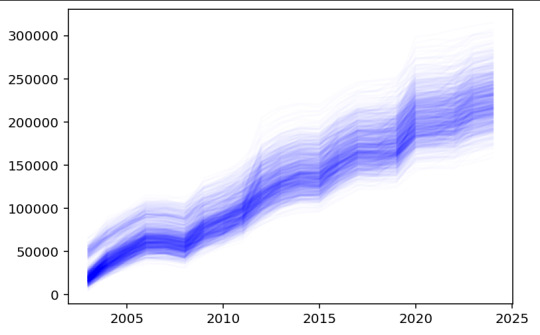
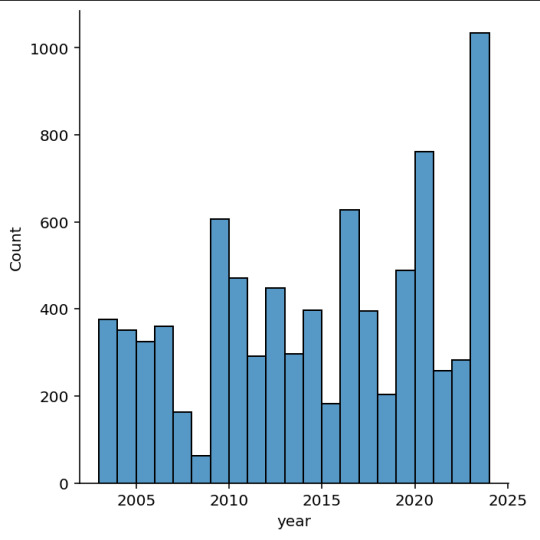
0 notes
Text
nifty and bank nifty movers 23 jan 2024


#nifty50#nifty prediction#nifty fifty#bank nifty#nifty today#niftytrading#nifty index#backtesting#backtestmojo#Backtest#free Backtest
1 note
·
View note
Text
Value At Risk Indicated By Aberrant Stock Market Volatility and Expected Shortfalls for January 2025
Value at Risk, and VAR Normalized Returns Patterns, which are risk management indicators, and an early indicator of expected shortfalls for a given month of stock returns, are all turning in patterns which exceed expectations for the previous 100-Day...
#Backtesting#Broad Money#Federal Reserve#FOMC#Jerome Powell#M1#M2#M3#M4#M5#M6#Monetary Authority#Monetary Base#President Donald Trump#Standardized Normal Returns#United States#Value-At-Risk#VAR
0 notes
Text

Free Backtesting
#freebackktesting#backtest#backtesting#freebacktest#niftybacktesting#optionbacktesting#freeoptionbackteting#bankniftybacktesting
1 note
·
View note
Text
With the modern world being much more reliant on technology, the financial market is not identical to other markets. Trading has, thus, also transformed thanks to the emergence of algorithmic trading systems which enable traders to make immediate trades based on technical indicators without manual execution.
0 notes
Text
Why "One Size Fits All" Fails in Technical Analysis: The Case for Tailored Trading Strategies
Technical analysis is one of the most popular approaches to trading in financial markets, used by traders to analyze price movements and make informed decisions. While its principles are widely applicable, assuming that a single strategy can work for everyone is a recipe for disappointment. The reason is simple: trading strategies need to align with an individual’s specific trading style, risk…
#Backtesting#Crypto Trading#Custom Trading Plans#day trading#forex trading#learn technical analysis#Market Analysis#Risk Management#stock market#stock markets#stock trading#successful trading#swing trading#Tailored Trading#technical analysis#Trading Indicators#Trading Psychology#Trading Strategies#Volatility Strategies
0 notes
Text
Boost your Trading efficiency and do Backtesting with TradingView paid Indicator for free
Boost your trading efficiency and enhance strategies with Premium TradingView Indicators. Get access to advanced tools for precise market analysis and backtesting, all for free. Maximize your trading potential by leveraging powerful features designed to optimize your performance, improve decision-making, and test your strategies with ease.
0 notes
Text
In-Depth Exploration of Algorithmic Trading: Strategies, Technologies, and Impact on Markets

Algorithmic trading, often referred to as algo trading, has revolutionized the financial markets by allowing traders to execute orders at lightning speed and with mathematical precision. It involves using complex mathematical models, automated systems, and advanced technologies to make decisions based on pre-set conditions or algorithms. This essay delves into the strategies employed in algorithmic trading, the technology driving it, and its overall impact on financial markets, providing an in-depth look at how algo trading has shaped modern finance.
1. Core Strategies in Algorithmic Trading
Algorithmic trading is built on various strategies that rely on historical data analysis, statistical methods, and predictive models. Some of the most prominent strategies used in this field include High-Frequency Trading (HFT), Statistical Arbitrage, Market Making, and Trend-Following Algorithms. These strategies cater to different market conditions and investor needs, from short-term profit opportunities to long-term market-making services.
A. High-Frequency Trading (HFT)
High-frequency trading (HFT) is one of the most well-known and controversial forms of algorithmic trading. It focuses on executing a large number of orders in fractions of a second. HFT firms use sophisticated algorithms to analyze vast amounts of market data and make split-second decisions. These strategies rely on speed—traders look to exploit very small price inefficiencies that exist for only milliseconds.
How It Works:
HFT algorithms rely on technologies such as low-latency networks and co-location services (where traders place their servers close to the exchange’s infrastructure) to reduce the time it takes to execute trades. These firms also leverage tick data, which refers to real-time price data that changes every time a trade is made.
Real-World Example:
A well-known HFT firm is Virtu Financial, which became famous for having only one day of trading losses over a five-year period between 2009 and 2014. Virtu’s algorithms analyzed market data to exploit tiny price inefficiencies, allowing it to profit on both rising and falling markets. Its success underscores the power of speed in HFT.
Impact and Controversy:
While HFT has contributed to increased liquidity and tighter bid-ask spreads, it has also attracted criticism. Critics argue that HFT can lead to increased volatility, and market “flash crashes” have been attributed to high-frequency algorithms. One such event occurred in May 2010, when the U.S. stock market experienced a sudden and dramatic crash, wiping out nearly $1 trillion in market value within minutes. Investigations revealed that HFT firms exacerbated the decline by pulling out of the market during the sell-off, creating a liquidity vacuum.
B. Statistical Arbitrage (StatArb)
Statistical arbitrage, often abbreviated as StatArb, is a type of algorithmic trading strategy that attempts to exploit the pricing inefficiencies between correlated securities. StatArb strategies involve identifying relationships between different securities and executing trades when these relationships deviate from historical norms.
How It Works:
StatArb algorithms use historical data to calculate the statistical likelihood of one asset’s price moving in relation to another. For example, the algorithm might identify a strong historical correlation between two stocks, and if one deviates from its expected relationship with the other, the algorithm will place trades anticipating a return to equilibrium.
Real-World Example:
During the 2007–2008 financial crisis, many hedge funds employing StatArb strategies saw significant losses due to the breakdown of historical correlations in highly stressed market conditions. However, firms that quickly adapted their algorithms to account for the new volatility, like D.E. Shaw and Renaissance Technologies, were able to capitalize on the increased market inefficiencies by identifying new relationships between assets.
Evidence:
StatArb remains one of the most popular algorithmic strategies among hedge funds, with quants (quantitative analysts) developing increasingly complex models to exploit ever smaller inefficiencies. The effectiveness of StatArb has been documented in academic research, such as Avellaneda and Lee (2010), who demonstrated that StatArb models outperform traditional arbitrage strategies during periods of high volatility.
C. Market Making
Market making is another algorithmic strategy where traders provide liquidity to the market by continuously quoting buy (bid) and sell (ask) prices for a security. Market makers profit from the bid-ask spread—the difference between the price at which they buy and sell an asset.
How It Works:
Market-making algorithms are designed to ensure that a market maker has an offer to both buy and sell an asset simultaneously, making money from the difference between these prices. They must carefully balance their inventory (the amount of stock they hold) to avoid significant exposure to market risk. These algorithms analyze the market’s depth, size of orders, and historical patterns to maintain liquidity efficiently.
Real-World Example:
The NYSE Designated Market Makers (DMM) use market-making algorithms to maintain orderly trading on the exchange. Firms like Citadel Securities and KCG Holdings have been instrumental in providing liquidity and ensuring that even during times of high volatility, buyers and sellers can still find counterparties.
Impact:
Market making is essential for maintaining liquidity in financial markets, especially in less liquid securities like small-cap stocks or thinly traded ETFs. Without market makers, these markets could become illiquid, leading to wider spreads and greater volatility. Algorithmic market makers ensure that liquidity is always present, reducing the costs for individual traders and investors.
D. Trend-Following Algorithms
Trend-following algorithms are designed to identify market trends and execute trades that follow the direction of these trends. Unlike HFT strategies that rely on ultra-short timeframes, trend-following algorithms operate on longer time horizons, typically days, weeks, or even months.
How It Works:
Trend-following algorithms use various technical indicators, such as moving averages, Bollinger Bands, and Relative Strength Index (RSI), to identify the onset of a new trend. Once a trend is detected, the algorithm will enter a trade in the direction of the trend, aiming to ride the wave until signs of a reversal appear.
Real-World Example:
A prime example of trend-following success comes from Winton Capital, a hedge fund known for using algorithmic trend-following strategies. Founded by David Harding in 1997, Winton has consistently outperformed many competitors by focusing on long-term trends across various asset classes, including equities, bonds, and commodities.
Evidence:
Trend-following strategies have proven effective in markets where clear trends develop over time, such as the commodities market. A study by Hurst et al. (2012) showed that trend-following strategies outperform during periods of economic uncertainty when large trends tend to develop as markets digest new information slowly. However, they can underperform in sideways or choppy markets where no clear trend exists.
2. Technological Advancements Driving Algorithmic Trading
The success of algorithmic trading is driven by the rapid advancement of technology. From machine learning (ML) to artificial intelligence (AI), these technologies are transforming the way algorithms are developed, tested, and deployed. Moreover, advancements in hardware infrastructure and cloud computing allow firms to process massive amounts of data at unprecedented speeds.
A. Machine Learning and AI in Algorithmic Trading
Machine learning and AI have become game-changers in algorithmic trading. These technologies allow algorithms to improve over time by learning from historical data and making predictions based on evolving market conditions. Traders no longer need to manually adjust their strategies; instead, AI-driven models adapt autonomously to new data.
How It Works:
In machine learning-based trading, algorithms are trained using historical price data, volume, and other market inputs. These models then identify patterns that have historically been profitable and apply them in real-time trading. Reinforcement learning, a branch of ML, is particularly suited to trading as it allows the algorithm to learn from both successful and unsuccessful trades, refining its strategy over time.
Evidence:
Hedge funds like Man AHL and Two Sigma are pioneers in using AI-driven strategies. These firms apply machine learning to vast datasets, ranging from price feeds to social media sentiment, to identify new trading opportunities. Two Sigma, for example, uses AI to scan millions of data points, including weather patterns, satellite imagery, and corporate earnings, to uncover hidden market signals.
B. Low-Latency Trading and Infrastructure
Low-latency trading refers to the practice of executing trades as quickly as possible to gain an advantage over competitors. Technological improvements in server infrastructure, fiber-optic cables, and co-location services have drastically reduced the time it takes for orders to reach exchanges.
Real-World Example:
One notable low-latency trade is the construction of the Spread Networks fiber-optic cable between Chicago and New York. This cable, completed in 2010, shortened the time it took for trading signals to travel between the two financial hubs from 17 milliseconds to 13 milliseconds. This 4-millisecond advantage was worth millions to HFT firms competing to execute trades faster than their rivals.
3. Impact of Algorithmic Trading on Markets
Algorithmic trading has transformed global financial markets, influencing everything from liquidity and market depth to volatility and price discovery. While algo trading has introduced efficiencies, it has also brought new challenges and risks.
A. Increased Liquidity
Algorithmic trading has significantly increased liquidity in many markets, particularly in equities and foreign exchange. By providing a continuous flow of buy and sell orders, algo traders reduce the bid-ask spread, making it cheaper for all market participants to trade.
B. Increased Liquidity
Algorithmic trading, especially through market-making strategies, ensures that there is a ready buyer and seller for various assets, even during volatile times. For example, during the COVID-19 pandemic, algorithmic traders played a crucial role in maintaining liquidity across multiple asset classes, allowing markets to function more smoothly despite the global uncertainty. Studies from financial institutions, such as Citadel Securities, showed that algorithmic liquidity providers absorbed market shocks better than traditional human market makers during this period.
Impact on Retail Traders:
For retail traders, the increase in liquidity means lower transaction costs and faster execution of trades. However, it also raises concerns about the fairness of market access, as large institutional players equipped with advanced algorithms often gain a competitive edge through technologies like low-latency trading and co-location.
C. Market Volatility and "Flash Crashes"
While algorithmic trading contributes to liquidity, it can also increase market volatility, especially when multiple algorithms interact in unexpected ways. One of the most prominent examples of this is the Flash Crash of May 6, 2010, when the U.S. stock market experienced a sharp decline within minutes, followed by a rapid recovery. This event wiped out approximately $1 trillion in market value within half an hour before bouncing back.
What Happened:
Investigations revealed that a large sell order, executed by a mutual fund using an algorithmic strategy, triggered a chain reaction. High-frequency trading algorithms began aggressively selling, creating a feedback loop that sent prices plummeting. The event demonstrated how interconnected and reactive algorithms can lead to systemic risks, especially when they amplify market movements rather than stabilize them.
Efforts to Mitigate Volatility:
In response to the Flash Crash and similar events, regulatory bodies such as the U.S. Securities and Exchange Commission (SEC) have introduced measures like circuit breakers—temporary halts in trading when extreme volatility is detected. Moreover, algorithmic traders have become more cautious, implementing safeguards like throttle mechanisms that prevent excessive trading during volatile periods.
D. Impact on Price Discovery
Price discovery—the process of determining the market value of an asset based on supply and demand—has been significantly influenced by algorithmic trading. In many cases, algo trading improves price discovery by rapidly incorporating new information into asset prices. For example, news events, economic data releases, or corporate earnings reports are processed by algorithms in milliseconds, allowing markets to adjust almost instantaneously.
Challenges in Price Discovery:
However, some critics argue that the speed at which algorithms process information can distort price discovery, especially during periods of low liquidity. In certain cases, algorithms may react to false signals or minor market inefficiencies, creating temporary price distortions. These price anomalies, although short-lived, can impact retail and institutional traders alike, especially those who are slower to react.
Real-World Impact:
During the Brexit referendum in 2016, algorithmic traders played a critical role in driving market reactions. As the results of the vote became clear, algorithms began selling British assets, leading to a sharp drop in the value of the British pound. The rapid adjustment of prices reflected the efficiency of algorithmic trading in reacting to geopolitical events, but it also highlighted the potential for exacerbating sharp market movements.
4. Regulatory and Ethical Considerations
As algorithmic trading continues to evolve, regulators and market participants are faced with new ethical and legal challenges. The speed, complexity, and opacity of algorithmic trading make it difficult for traditional regulatory frameworks to keep pace with these developments.
A. Market Manipulation and Ethical Concerns
One of the primary concerns surrounding algorithmic trading is the potential for market manipulation. Algorithms can be designed to engage in practices such as spoofing—where traders place orders they do not intend to execute to create false demand or supply in the market. In 2015, the U.S. Department of Justice charged a British trader, Navinder Sarao, with using spoofing algorithms to contribute to the Flash Crash of 2010.
Spoofing Explained:
Spoofing involves placing large buy or sell orders with no intention of executing them. Once other market participants react by adjusting their orders in response to the perceived demand or supply, the spoofer cancels the initial orders and profits from the market’s reaction. While regulatory bodies such as the Commodity Futures Trading Commission (CFTC) and the SEC have cracked down on spoofing, the complexity of algorithms makes it challenging to detect and prevent such practices.
B. Regulatory Efforts
To address the risks associated with algorithmic trading, regulators around the world have implemented new rules aimed at increasing transparency, reducing systemic risks, and preventing market manipulation. For example, in Europe, the Markets in Financial Instruments Directive II (MiFID II) introduced stricter reporting requirements for algorithmic traders, including the need to register their algorithms and adhere to pre-trade risk controls.
In the U.S., the SEC and CFTC have taken steps to monitor high-frequency trading firms more closely. Additionally, exchanges have introduced mechanisms such as kill switches, which automatically shut down trading algorithms if they exhibit erratic behavior.
C. Ethical Considerations in AI-Driven Trading
As machine learning and artificial intelligence become more integrated into algorithmic trading, new ethical concerns have emerged. Unlike traditional algorithms that follow explicit instructions, AI-driven models often operate in "black box" systems, meaning that even their creators may not fully understand how the algorithms arrive at certain decisions. This lack of transparency raises questions about accountability, particularly if an AI-driven algorithm were to cause significant market disruptions.
Moreover, AI algorithms can potentially reinforce biases present in historical data, leading to unintended consequences in trading strategies. Ensuring fairness and preventing unintended discrimination in financial markets is a growing challenge for regulators and AI developers alike.
5. The Future of Algorithmic Trading
The future of algorithmic trading is poised to be shaped by several key developments, including advances in quantum computing, blockchain technology, and the democratization of algorithmic tools for retail investors.
A. Quantum Computing
Quantum computing has the potential to revolutionize algorithmic trading by vastly increasing computational power. Unlike classical computers, which process information in binary (0s and 1s), quantum computers can process multiple states simultaneously, allowing them to solve complex problems at speeds unimaginable with today’s technology.
Potential Impact on Trading:
In algorithmic trading, quantum computing could enable the development of more sophisticated models that consider an exponentially larger number of variables and scenarios. This could lead to more accurate predictive algorithms, faster arbitrage opportunities, and even the ability to model entire financial ecosystems. While quantum computing is still in its early stages, firms like IBM and Google are investing heavily in the technology, and its eventual impact on financial markets could be transformative.
B. Blockchain and Decentralized Finance (DeFi)
Blockchain technology, particularly its application in Decentralized Finance (DeFi), presents new opportunities and challenges for algorithmic trading. DeFi platforms, which allow for peer-to-peer financial transactions without intermediaries, are growing in popularity. Algorithms designed to trade on these platforms will need to adapt to decentralized exchanges (DEXs) and navigate the unique challenges of smart contracts and automated market makers (AMMs).
Example:
In the world of cryptocurrency, algorithmic traders are already active participants in automated liquidity pools on platforms like Uniswap and SushiSwap. These decentralized exchanges rely on algorithms to match buyers and sellers, and traders use bots to exploit price inefficiencies and arbitrage opportunities across different DeFi platforms.
C. Democratization of Algorithmic Trading
As technology continues to advance, algorithmic trading tools are becoming more accessible to retail investors. Platforms like QuantConnect, AlgoTrader, and MetaTrader offer retail traders the ability to develop and backtest their own algorithms using professional-grade tools. This democratization of algo trading has the potential to level the playing field, allowing individual investors to compete with institutional players in ways that were previously impossible.
Challenges:
However, with increased access comes increased risk. Retail traders may lack the technical expertise to develop robust algorithms, and without proper risk management, they could expose themselves to significant losses. Moreover, the proliferation of algorithmic trading among retail investors could introduce new forms of market volatility, as large numbers of amateur traders execute similar strategies simultaneously.
Conclusion
Algorithmic trading has undeniably transformed global financial markets, bringing increased liquidity, faster execution, and more efficient price discovery. However, it has also introduced new risks, including market volatility, ethical concerns, and the potential for market manipulation. As technology continues to evolve, particularly with the advent of quantum computing and AI, algorithmic trading will likely become even more sophisticated and widespread. Regulatory bodies must continue to adapt to these changes to ensure that markets remain fair, transparent, and stable.
The future of algorithmic trading is filled with both promise and challenges. With the right balance of innovation and regulation, algo trading can continue to drive the financial industry forward while mitigating the risks inherent in such a fast-paced and highly automated environment.
#AlgorithmicTrading#AlgoTrading#QuantitativeTrading#AutomatedTrading#HighFrequencyTrading#MathematicalFinance#FinancialMarkets#TradingStrategies#MachineLearning#ArtificialIntelligence#DataAnalysis#MarketEfficiency#Liquidity#RiskManagement#TradingSystems#FinancialTechnology#Fintech#MarketMicrostructure#TradingAlgorithms#Backtesting#Optimization#StatisticalArbitrage#EventDrivenTrading
0 notes
Text
How Composer Helps Investors Build and Automate Trading Strategies

Investing can be complex, especially when creating and executing sophisticated trading strategies. Composer simplifies this process by enabling investors to design, backtest, and automate trading strategies without coding.
Problem Statement: Investors often struggle with building trading strategies that respond to market conditions, as manual trading requires expertise, time, and discipline.
Application: With Composer, investors can describe their goals in natural language, and the AI builds a strategy accordingly. Composer then allows users to backtest the strategy to evaluate its performance before deploying it. Once satisfied, investors can fully automate the execution and rebalancing of their portfolio, eliminating the need for constant monitoring.
Outcome: Using Composer, investors can achieve better returns by automating data-driven strategies and eliminating emotional decision-making. The platform allows users to focus on high-level strategy while Composer handles the execution.
Industry Examples:
Retail Investors: Individuals can automate trading based on long-term growth or short-term market trends.
Financial Advisors: Use Composer to manage multiple client portfolios efficiently by automating strategy execution.
Crypto Enthusiasts: Automate trading strategies for cryptocurrencies based on market indicators and performance metrics.
Additional Scenarios: Composer can be used for retirement planning, risk-adjusted investment strategies, or even community-driven trading ideas.
Build and automate your trading strategies with Composer. Get started today at aiwikiweb.com/product/composer/
#Investing#TradingAutomation#Composer#AI#Finance#WealthManagement#Strategy#Fintech#Backtesting#RetirementPlanning
0 notes
Link
🚀 Ready to elevate your trading game? Learn how to backtest your strategies with Coinrule and optimize your performance like a pro! 🏆📈 Check out our latest guide and see how you can transform your portfolio into a success story. 💹✨
🔍 Dive into real-world case studies, expert tips, and actionable insights to make your trading strategies work for you. Start mastering your trades today! 🚀🔧
#crypto trading#trading strategies#backtesting#crypto investment#trading tips#financial freedom#blockchain#trading success#invest smart#crypto market#trading tools
0 notes
Text
What are the risks associated with algorithmic trading?
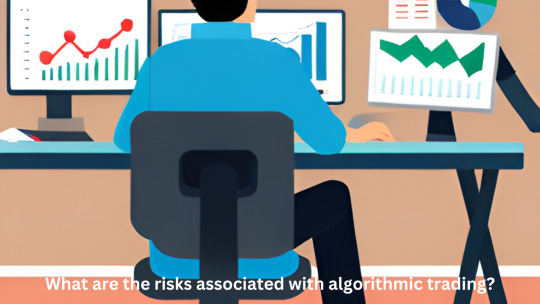
Algorithmic trading, also known as algo-trading, is the use of computer programs to execute trades based on pre-defined instructions. It has become increasingly popular in the financial industry due to its potential benefits, such as increased efficiency and speed. However, with any new technology comes risks that traders must be aware of. What are the risks associated with algorithmic trading? This presentation will explore the risks associated with algorithmic trading and discuss strategies for mitigating those risks.
What is Algorithmic Trading?
Algorithmic trading is the use of computer programs to automatically execute trades based on pre-defined instructions. These instructions can be based on a variety of factors, such as market trends, news events, or technical indicators. The programs used in algorithmic trading are designed to analyze large amounts of data and make decisions based on that analysis. This allows traders to execute trades more quickly and accurately than if they were doing so manually.

Benefits of Algorithmic Trading
One of the main benefits of algorithmic trading is increased efficiency. Because the programs used in algo-trading can analyze and execute trades much faster than humans, traders can take advantage of market opportunities more quickly. Algorithmic trading can also increase accuracy by removing the potential for human error. The programs used in algo-trading are designed to follow pre-defined rules and execute trades based on specific criteria, which can lead to more consistent results.

Risks Associated with Algorithmic Trading
While algorithmic trading can offer many benefits, there are also risks that traders must be aware of. One of the biggest risks is system failures, which can occur if the programs used in algo-trading are not properly tested or maintained. Another risk is market volatility. Because algorithmic trading relies on pre-defined rules and criteria, it may not be able to adapt quickly enough to sudden market changes, which can lead to losses.

Mitigating the Risks of Algorithmic Trading
To mitigate the risks associated with algorithmic trading, traders should implement robust risk management systems. This includes regularly testing and maintaining the programs used in algo-trading, as well as conducting stress tests to ensure that the systems can handle unexpected market events. Traders should also stay up-to-date with regulatory requirements and ensure that their programs are in compliance with applicable laws and regulations.

Conclusion
In conclusion, while algorithmic trading can offer many benefits, traders must be aware of the potential risks associated with this technology. By implementing robust risk management systems and staying up-to-date with regulatory requirements, traders can mitigate these risks and take advantage of the potential benefits of algo-trading. It is important to remember that with proper risk management strategies, algorithmic trading can be a powerful tool for traders.
Read the full article
#AlternativeData#AutomatedTrading#Backtesting#HighFrequencyTrading#MachineLearning#MarketSentimentAnalysis#MeanReversion#Optimization#QuantitativeTrading#RiskManagement#StatisticalArbitrage#TrendFollowing
0 notes
Text
Weekly RSI Ascending/Descending (pt2)
Using daily candles for better precision. A continuation of https://www.tumblr.com/patrickbatoon/772173459217383424/weekly-rsi-ascendingdescending?source=share
---
The Weekly RSI trend strategy was incredibly promising, so I wanted to take this further with more granular data. For this exploration I ended up using Daily candle data of the Russell1000 with the same timeframe of 01-JAN-2020 to 01-JAN-2025
The core strategy remains the same:
Entry: 3 consecutive increases in weekly RSI(14) using RSI-smoothed(14). For daily candles this can be computed using RSI(70) and RSI-smoothed(70).
Exit: Close < EMA20: If the close of the stock crosses below the 20-day EMA, fully exit the position.
I ended up removing the 50-week EMA filter since I found it excludes key reversals.
Broad market entry conditions as filters:
$VIX - week over week decrease. The VIX measures expected 1-year volatility as a percentage. Increases in this measure is driven by Put/Call options pricing, however its primarily associated with Put buying for downside protection
$RSP - Closeempirically found that this acts as a filter for potential key reversals and breakouts
Results:
From 01-JAN-2020 to 01-JAN-2025 it appears that the winrate is much lower than the weekly backtests suggested, but it ends up catching more false signals on the day-to-day.
Trades = 6420 Winrate = 35.72 % Total Mean = $39.84 Profitable Mean = $194.94 Upper Quartile Mean = $266.74
From 01-JAN-2020 to 01-JAN-2025
Trades = 19168 Winrate = 38.62 % Total Mean = $40.43 Profitable Mean = $177.11 Upper Quartile Mean = $257.12
---
Lastly, with the vast number of trades included in the backtest, I wanted to simulate the universe of possible outcomes through a Monte Carlo simulation. This was done by sampling 120 trades per year (10 trades per month) and determining the portfolio growth.
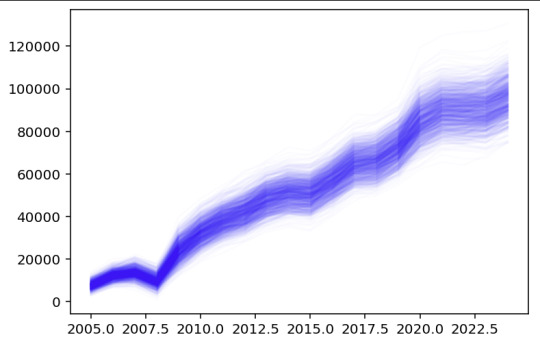
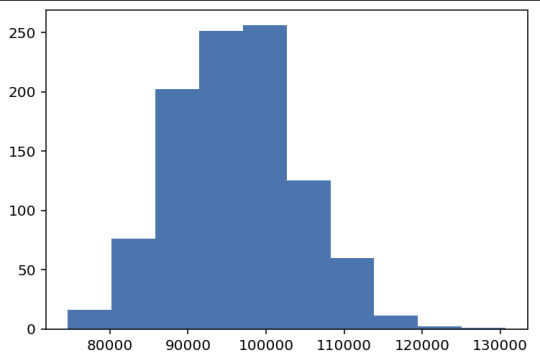
0 notes
Text
Automated Forex Trading: Benefits and Risks of Using Trading Robots
Automated forex trading has revolutionized the way traders engage with the forex market. By utilizing trading robots, also known as expert advisors (EAs), traders can execute trades automatically based on pre-defined criteria. While automated forex trading offers numerous benefits, it also comes with inherent risks. This article explores the advantages and disadvantages of using trading robots…

View On WordPress
#Automated Forex Trading#Backtesting#Expert Advisors#Forex Diversification#Forex Indicators#Forex Market#Forex Security#Forex Trading#Forex Trading Plan#Market Analysis#Market Efficiency#Risk Management#Technical Analysis#Trading Automation#Trading Costs#Trading Performance#Trading Robots#Trading Strategies#Trading Technology
0 notes
Text

#backtesting#nifty#nifty50#banknifty#option trading tips#option trading strategy#option backtesting#options#nifty today
1 note
·
View note
Text
In the world of trading, the development and evaluation of trading algorithms are crucial steps toward achieving effective and reliable trading strategies. Spot algorithmic trading systems, which operate in real-time to execute trades based on predefined criteria, require thorough backtesting and evaluation to ensure they function as intended. This blog will guide you through the essential steps to backtest and evaluate spot algorithmic trading systems, focusing on critical aspects and techniques.
#trading strategy you intend to backtest#algorithmic trading platform#Effective risk management#Backtesting#Algorithmic Trading
0 notes